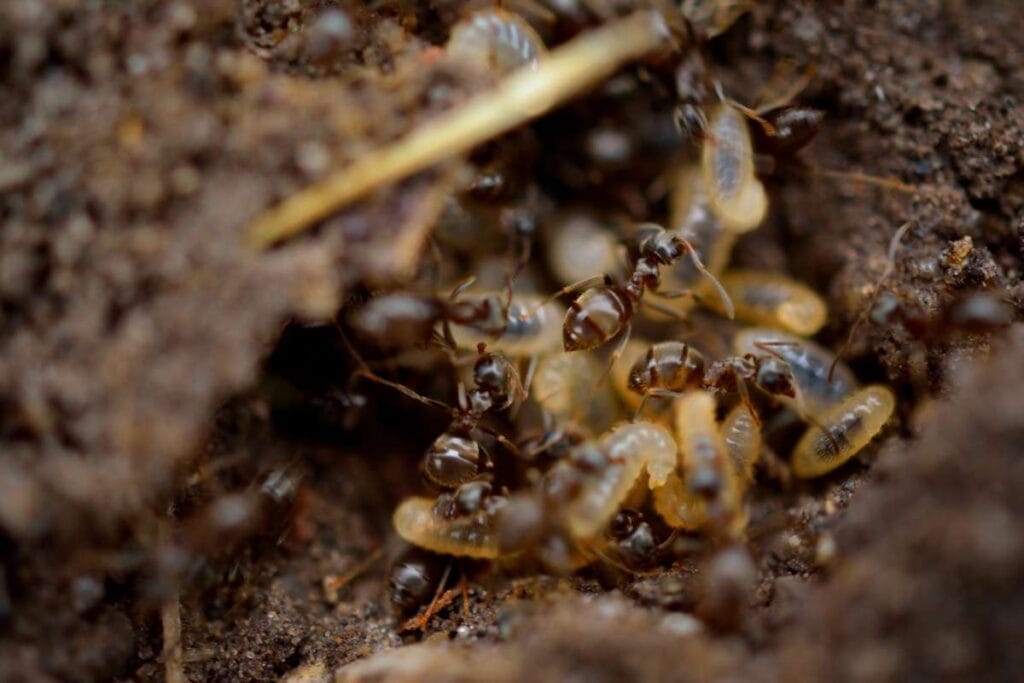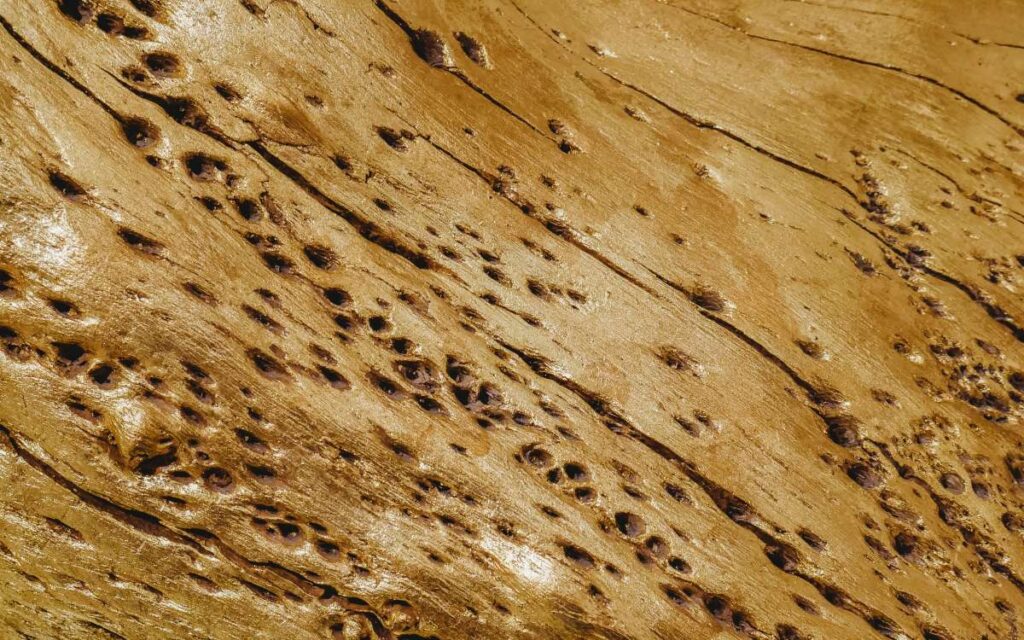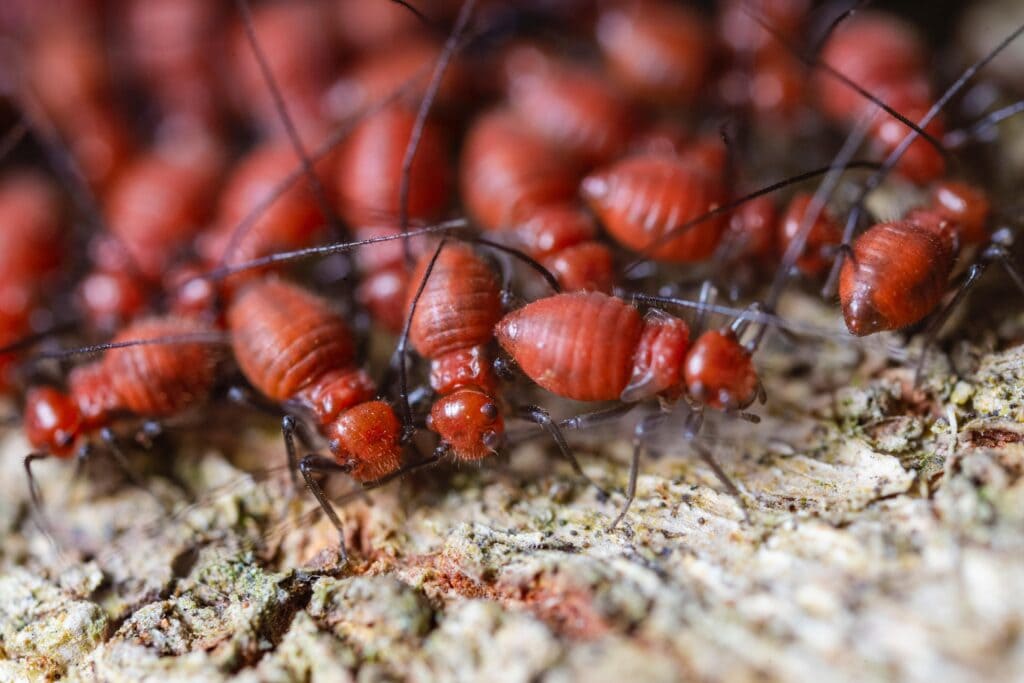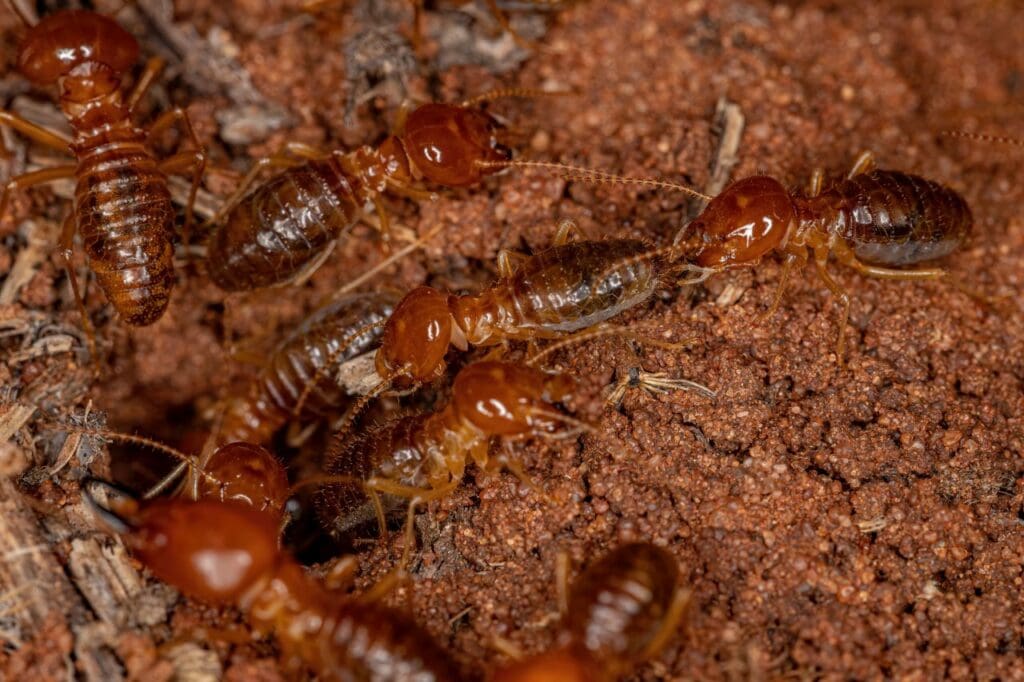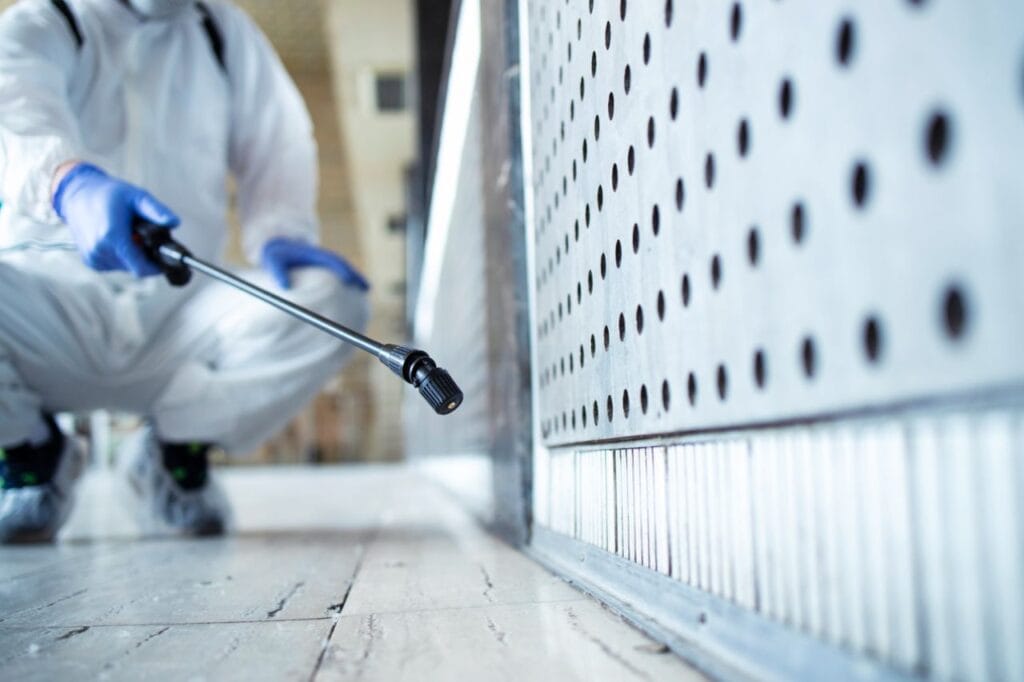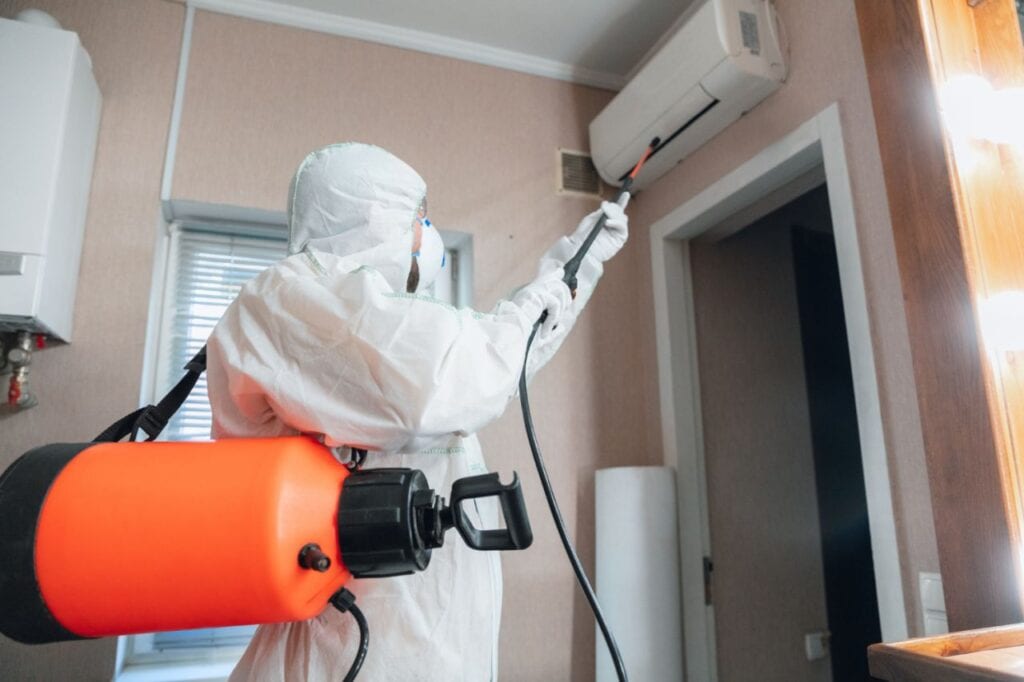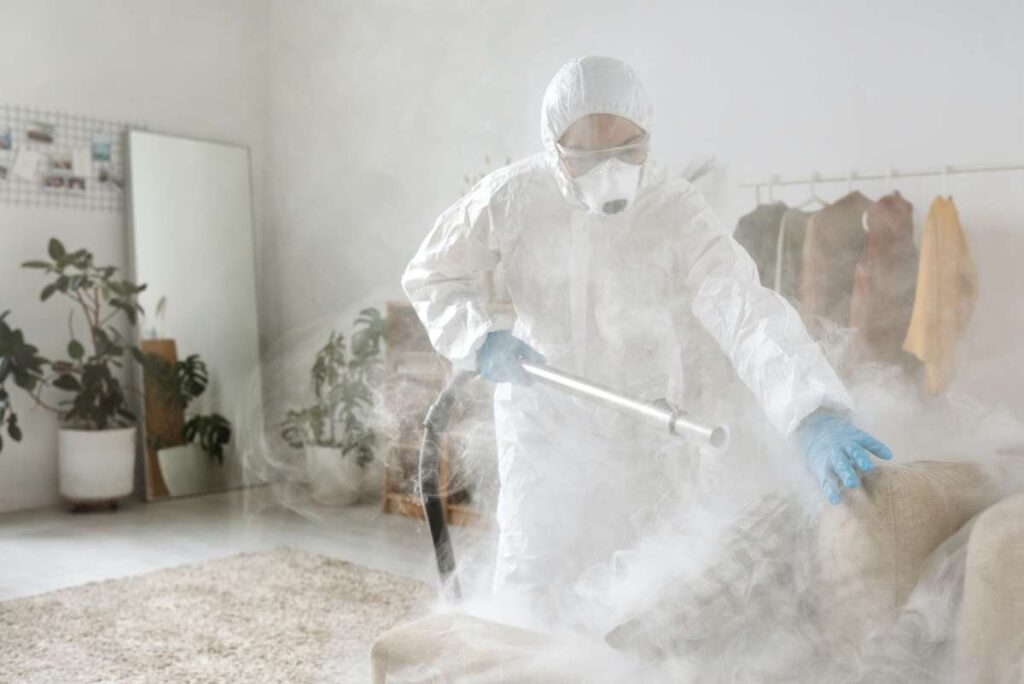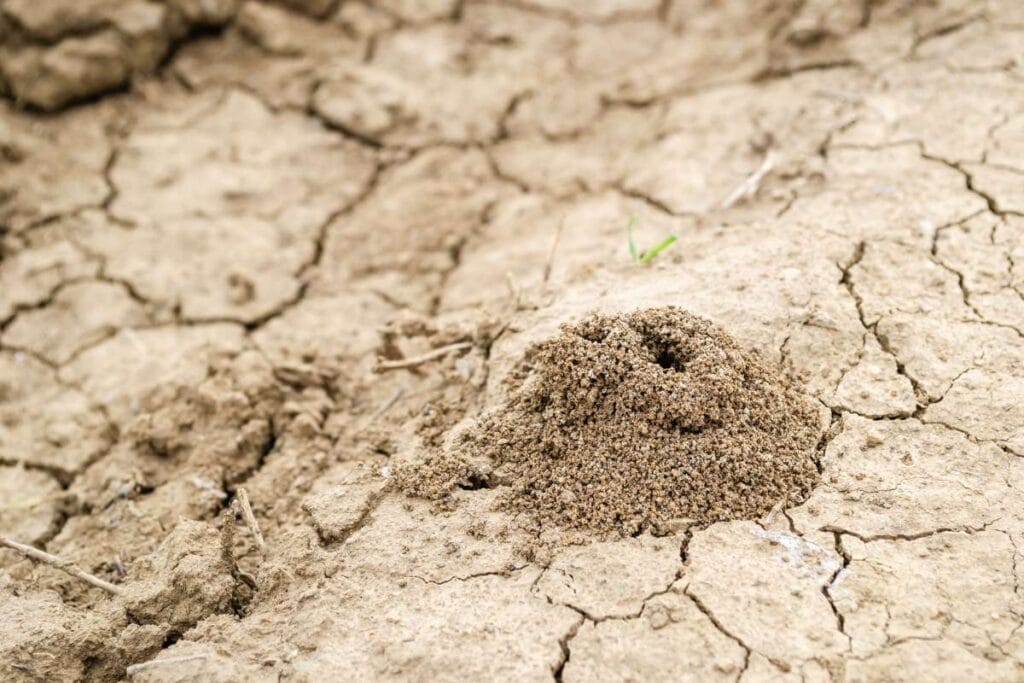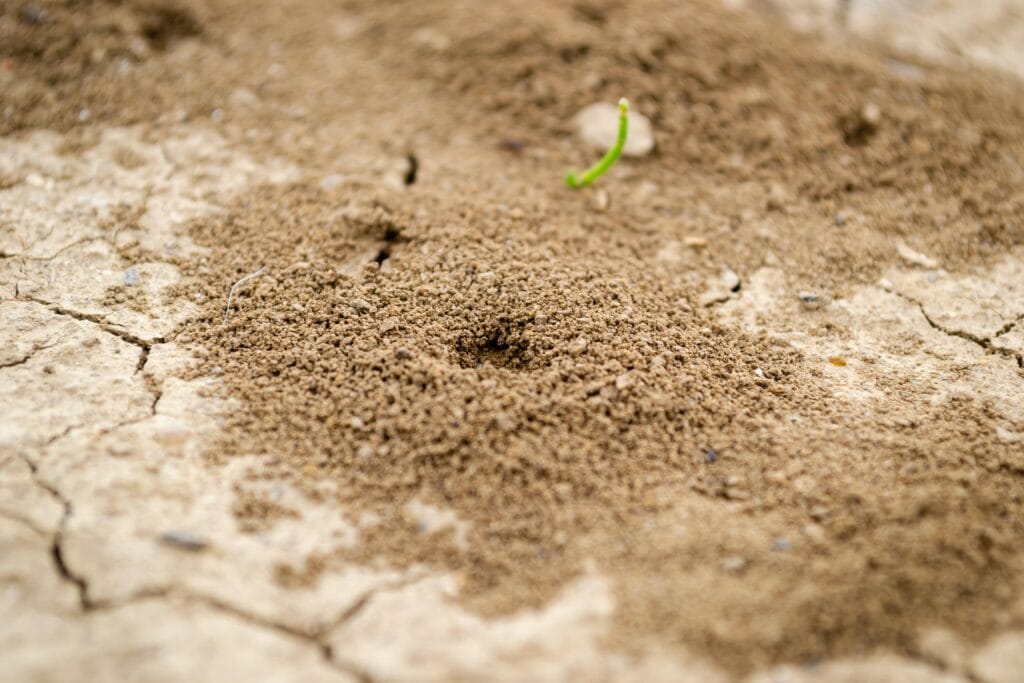Termites, more commonly known as "silent destroyers," can cause damage to your property without your knowledge because of their ability to operate in stealth mode. These bugs may be little, but they can wreak damage if you let them. Repairs cost a pretty penny.
In this comprehensive guide, we hope to shed light on the essential indications that indicate a potential termite infestation, empowering you to take preventative actions.
Early Termite Warning Signs
Protecting your property from termites requires you to know their early warning signs. These warnings might be hard to see, but they're important for taking swift action before the problem worsens. Here, we will review some basic but important signs that you might have termites in your home.
Wings Left Behind
A termite control specialist may be required to be consulted if you find abandoned wings next to a closed door or window. During the spring, termites congregate in regions that are warm and well-lit.
Following this, they will be able to lose their wings. It is important to remember that termites are distinct from flying ants, even if you might mistake them for flying ants.
The termites' bodies are not segmented, and their wings are uniform in size. Depending on the species, flying ants have varying-sized wings, and their bodies are segmented into sections. Finding stacks of wings signifies that a colony is invading your home.
Hollow Wood
Termites are responsible for the damage that has been done, and it may not be difficult to locate. If you have any wooden constructions in your home, you only need to knock on them. Wood that has been punctured produces a hollow sound that is easily audible.
Cracks, splits, and other substantial damage can frequently be observed on the object's surface. These destructive pests may frequently form "galleries" or tunnels within the wood they make their home in.
Empty spaces are left behind in timber structures as a result of these spaces that run parallel to the grain. This is likely a severe infestation.
Termite Swarms
During their mating season, you could see the insects, and you might also locate their discarded wings. The termite swarm is a seasonal phenomenon when the male and female members depart to start a new colony.
The situation at your house could get even worse if that happens.
Finding a swarm indicates that a colony could soon form in or around your house, even if you have never seen termites.
You might be dealing with an infestation if you encounter these swarms more than once.
Mud Structures And Tubes
Subterranean termites build mud tubes for navigation because some termite species need moisture. The presence of these tube-like structures may indicate the presence of termites. The termite colony's food source is reached via these mud tubes constructed from damp earth.
These formations are often found on hard surfaces or along the foundation of homes, so looking at them is important. If you find mud tubes, it's a sign that termites are actively attacking your property.
It would help if you took quick action to stop the damage. To lessen the blow of these harmful pests, routine inspections and quick responses are necessary.
Pellets Or Droppings Spotting
Droppings, a characteristic shared by many pests, are a common infestation indicator. Drywood termites, unlike wet termites, can leave behind little pellets that seem like wood, like sawdust or coffee grounds.
While they painstakingly maintain cleanliness in their tunnels, these residues are dispersed around their activity areas.
While they bore into wood, these termites must painstakingly remove their waste.
Be on the lookout for these telltale indicators in different areas; finding termite droppings is a sure sign of dry wood termite infestation and requires quick action to stop additional damage to the structure. For early diagnosis and action, routine inspections are important.
Discovering Termite Bodies
The presence of termites, whether dead or alive, is a reliable indicator of a termite infestation. Considering that termites avoid regions with a lot of foot traffic, this can be a challenging situation.
Additionally, if you do come across them, there is a possibility that you will confuse them for flying ants or white ants. Sadly, one is significantly more harmful than the other.
One way to tell them apart is to look for the absence of white ants.
Termites aren't just visible; you might even hear them rattling around your walls. You might also detect a clicking or chewing sound inside your walls.
Swollen Panels On The Floor Or Walls
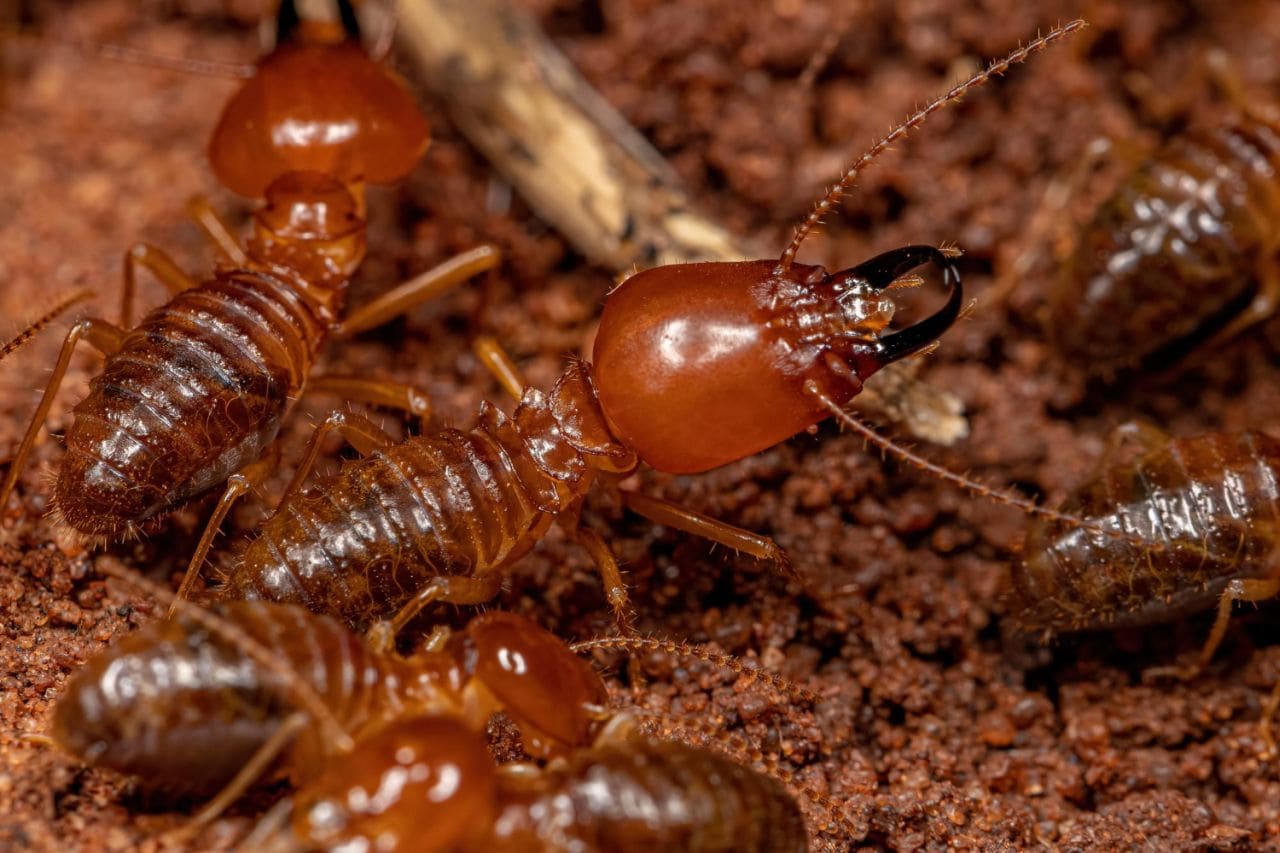
The damage may be obvious before you even see the termites if the infestation is severe. A classic indicator of an infestation is the presence of raised floors or bumps in the wall.
Inflamed panels are a warning indication that can be mistaken for water damage. Panels can swell due to termites, which inhabit just beneath wood surfaces. The paint may bubble as a result of this.
Termites could be the culprit after eliminating the possibility of water damage.
Factors That Increase Termite Risk
Termites can be found in Australia in hundreds of species, but only a small number of them cause damage to buildings. Termites feed on moist wood, so if your house is in an ideal environment, you should prepare for an infestation.
Due to the termites' preference for darkness, you may only become aware of a problem once significant damage has been done. An effective strategy for preventing termites is knowing what makes them more likely to attack.
Humidity And Moisture
Moisture and humidity are two other requirements for termites, which explains why they feed so well on decaying wood or timber that comes into touch with wet soil.
The best locations for termites to nest are in warm, wet areas of structures, such as basements, walls with leaking pipes, and roof cavities. Particularly in bright, warm, even the ground moisture from coastal areas can provide the perfect environment for termites.
Termite Infestations In The Neighbourhood
The risk of termites on your property can still be high if your neighbours unintentionally bring them there.
Once termites have exhausted their food supply in one yard, they may move on to yours. Their path may be aided, unknowingly, by the wooden fence that connects the homes.
Share knowledge and take preventative steps against termites with your neighbours to develop a collective defence.
By working together, we can combat these harmful pests as a community and reduce the likelihood of infestations spreading from one home to another.
A community-wide termite-resistant environment can be achieved by consistent communication and collaborative efforts.
Food And Shelter Are Always Available
You may be sure that termites will invade your home if there is an easily available source of cellulose, particularly wood. The perfect environment for termites to live in is in piles of wood and wooden structures in contact with the ground.
Termite-resistant or treated timber is the only acceptable option for usage below ground level in a building.
Proper ventilation is essential, and frequent inspections for termite damage should be conducted. Termites can wreak havoc on buildings made of steel if food is abundant within.
No Termite Control Or Barrier
Even the most cautious home or company owner can have a pest problem, as termites do not discriminate. Annual termite inspections performed by a pest control firm that is both skilled and knowledgeable may swiftly find and eliminate any termites that may be present.
Installing termite barriers and other measures to avoid infestations can assist in discouraging termites from entering a building.
Vegetation And Materials Around Foundations
Lush flora or timber around a building's foundations attracts termites and hides their activity and access locations. Termites can camouflage themselves more effectively when foraging for food beneath layers of mulch and leaves.
You can keep your property safe by keeping a clear zone around the base and storing wood away from the building as much as possible. Termites are less likely to build colonies and cause damage to your structure when you take this proactive strategy and disrupt their paths.
Taking Action: Termite Control And Prevention
To keep your property in good condition, you must take action against termites. Discover the best methods for termite management and prevention in this guide.
Find out everything you need to know to keep your house or company safe, from contacting experts to using specific treatments. You can ensure the safety and security of your investment by gaining knowledge about termite infestations and taking measures to prevent them wherever possible.
Regular Inspections
Naturally, scheduling routine inspections is the surest approach to ward against termites. By having a certified expert check for problems regularly, you can catch them before they cause expensive damage and necessitate pricey repairs.
Protect The House From Wood
Termites love to feast on wood piles. They also make it impossible to regulate the humidity, which is perfect for the rapid and robust development of white ant colonies.
Unfortunately, the woodpile won't satisfy these ravenous pests, and they'll head straight for your home instead. They won't be able to get into your home if there's wood around it, so don't put any under the house or anywhere near the foundations.
Maintaining Weep Holes
Termites can also enter a home through weep holes covered with mulch, soil, or vegetation around the property's outside. According to Australian requirements, at least 75 mils of space must be between the soil and the ground level or the path leading to your weep hole.
To rephrase, termite evidence, typically in mud trails, can be readily observed if sufficient space exists between the ground and the base of each weep hole.
The weep holes are often partially or covered over by homeowners who scatter yard debris, soil, mulch, or even plant beds along the edge of the wall. Termites can easily access the property's framework by tunnelling through the earth or plants and then slipping through the weep hole.
Avoid Keeping Unwanted Timbers And Firewood
Many termite infestations you observe are undoubtedly caused by people piling firewood against their dwellings. In addition to being stacked on top of one other, they are frequently positioned against the house and even cover the weep holes when not used.
Firewood is occasionally stashed beneath the property, which might cause issues. No matter what you do, be careful not to store timbers and firewood too close to the house's edge. This will allow you to detect termite tunnels leading up the wall if they ever attempt to enter from the outside.
Check The Plumbing And Repair Any Leaks
As a matter of common sense, fixing plumbing problems is essential for preventing various pests, including white ants. Because they attract various pest insects, leaks increase the relative humidity and moisture in a space. Preventing infestations should be your top priority when it comes to plumbing.
Make sure to patch leaks promptly and keep the system functioning at its best. You may make your property less appealing to pests by reducing the amount of accumulated moisture. Keeping your plumbing in good repair is an easy but essential way to keep white ants and other pests at bay, making for a more pleasant home or office.
Avoid Having Garden Beds Against Your Property
It is important to take note of this because it is so widespread, even though it fits within the category of what was discussed earlier. Do not plant gardens or plants against the property; under no circumstances should you continuously water that area for reasons already discussed.
Maintain Your Home's Exterior
If you take good care of your home, it will be much more difficult for termites to come in and infest it. Even seemingly insignificant elements, such as glossy paint, have the potential to serve as a deterrent for termites. The smallest of details is important.
These are the standard measures most people take to keep termites at bay. For peace of mind, get a professional to look at things occasionally.
Avoid Footings And Ground-Contact Timber Structures
Termites should always be considered while building anything out of wood, whether a deck, steps, pergola, or anything else. Metal stirrups, available at hardware stores, prevent timber buildings, especially footings, from touching the ground. The same rule applies to weep holes: any decking, latticework, steps, etc., should have 75 mm of space between them and the ground.
The homeowner's decision to pour concrete into the ground for footings or uprights when constructing an addition or deck against the house is a common cause of termite infestations.
Moisture And Leak Prevention
Moisture is unquestionably a major factor termites use to gain access to homes and inflict damage. Because water is an attractant, termites will almost always be active in locations that have seen water damage. One of the most common ways to avoid termites is to fix leaking fixtures as soon as possible. This includes faucets, shower heads, and toilets.
Overflow pipes from water heaters and air conditioners are another common source of high humidity. As a result of the overflow pipe or drainage outlet being located against the property's side, water often collects along the wall's edge. This, once again, draws termites to the region, which, in most cases, leads to termites entering the property.
Conclusion
Termites, which are sometimes called "silent destroyers," can do a lot of damage to your home while you're not looking. Termites leaving wings behind, empty wood, swarms, mud structures and tubes, pellets or droppings spots, and the presence of termites are all early warning signs that they are present.
When a door or window is closed, wings are often found next to it. empty wood makes an empty sound. On the object's surface, you can see cracks, splits, and other major damage that suggests a serious infestation. During mating season, termites spread, which means that a colony could form in or near your home. If you see mud structures and tubes on hard surfaces or along the base of your home, that means termites are actively attacking it.
Pellets or droppings spotting is a typical sign of an infestation. Drywood termites leave behind pellets that look like wood. These residues are spread out around the places where they work, so quick action is needed to stop more damage.
Finding termite bodies, whether they are living or dead, is a good sign that you have termites. People sometimes think that termites are flying ants or white ants, but there is one that is more dangerous. You may also hear termites eating or clicking inside your walls or that your walls are shaking.
Termite outbreaks can be very bad, and you can tell when they are by seeing panels on the floors or walls that are swollen or red, which might look like water damage. Wet wood, high humidity, and being close to other homes can all make you more likely to get termites. Because termites are like dark places, you should be ready for outbreaks in warm, wet places. Termites can also get into neighbouring homes, where people may bring them there by accident.
Food and refuge are always available, and the only acceptable material for use in a building below ground level is wood that has been treated or resistant to termites. It is important to have enough airflow and check for termite damage often. A skilled pest control company can help get rid of any termites that are present by inspecting your home once a year for them.
Termites can also be attracted to the ground and plants around foundations, so it's important to keep the area around the base clear and keep wood away from the house. Regular checks by licenced professionals can help find termites before they do damage that costs a lot to fix. You can make sure that your investment is safe and secure by taking action against termites.
To keep termites out of your home, you need to keep it free of wood piles, weep holes, unwanted beams, and firewood and keep the outside of your home in good shape. Wood piles are great for termites because they can easily get to the structure of the house by digging tunnels through the ground or plants.
Do not store firewood too close to the edge of the house, as this can allow termites to make burrows. Plumbing problems must be checked for and fixed on a regular basis to keep pests away since they attract bugs and make the air more sticky. Keeping your pipes in good shape can help cut down on the amount of moisture that builds up, which will make your home less appealing to pests.
Keeping the outside of your house in good shape is also important to keep termites away. Even things that don't seem important, like shiny paint, can be used to keep people away. Termite infestations can be avoided by keeping wooden buildings off the ground with metal stirrups and by not pouring concrete for footings or uprights.
Keeping your home dry and free of leaks are also important to keep termites out. Termites can't get into your home if you fix fixtures that leak and overflow lines from water heaters and air conditioners.
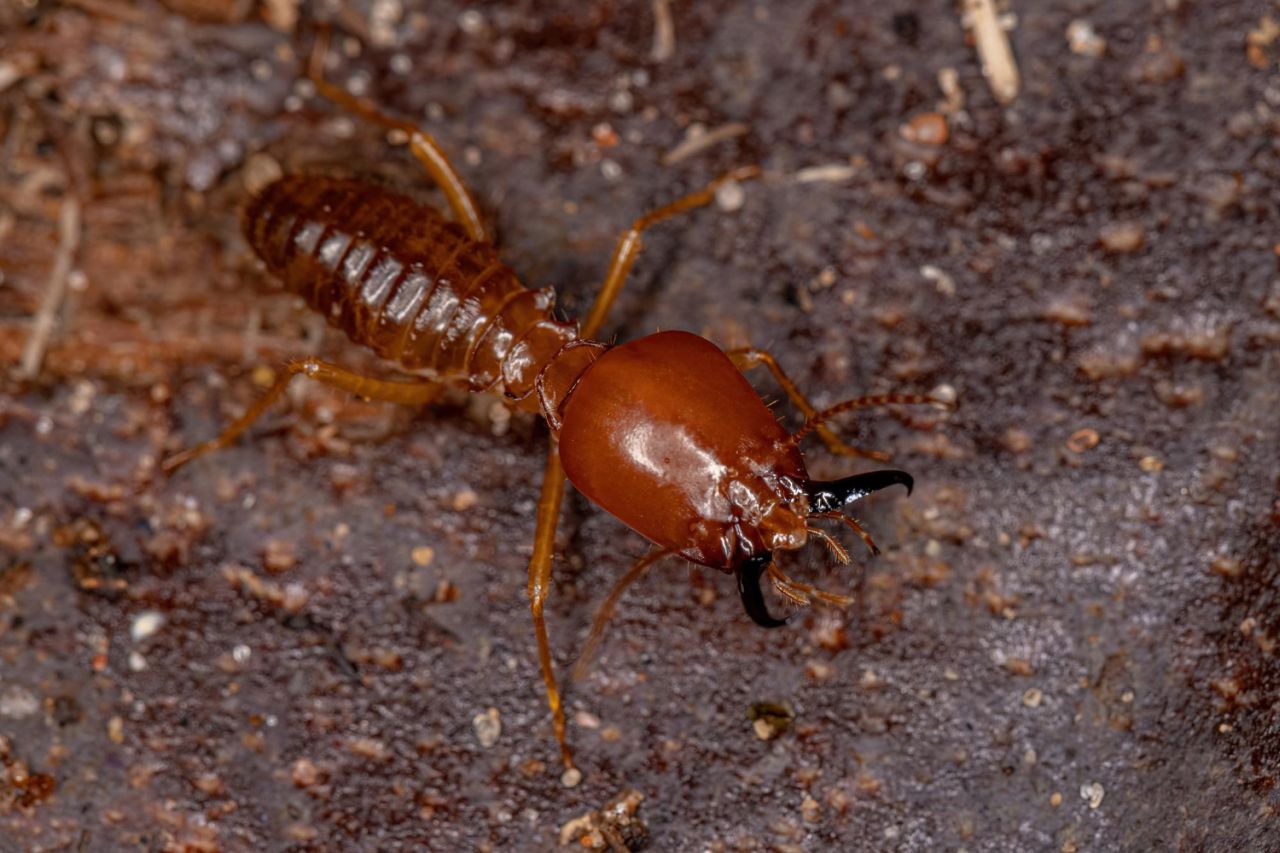
Content Summary
- Termites, often unnoticed, can cause significant damage to property.
- Early detection is key to preventing extensive damage from termites.
- Termite control starts with recognising early warning signs of an infestation.
- Discarded wings near doors or windows indicate potential termite presence.
- Termites are different from flying ants, with uniform wings and non-segmented bodies.
- Hollow-sounding wood can signal termite damage within the structure.
- Cracks and splits on wood surfaces often indicate termite activity.
- Termite swarms, especially during mating season, suggest a nearby colony.
- Mud tubes are a sign of subterranean termites accessing food sources.
- Musty odours in damp areas can be a sign of termite presence.
- Blisters or buckles in wood floors may be caused by termite damage.
- Swarmers, or flying termites, signal an established termite colony.
- Pellets or droppings resembling sawdust or coffee grounds indicate dry wood termites.
- Discovering termite bodies, dead or alive, is a reliable infestation indicator.
- Swollen panels on floors or walls can be mistaken for water damage but may indicate termites.
- Humidity and moisture create ideal conditions for termites.
- Termite infestations in the neighbourhood increase the risk of spread to your property.
- Access to cellulose, particularly wood, attracts termites.
- Lack of termite control or barriers makes properties more vulnerable to infestation.
- Vegetation and materials around foundations can hide termite activity.
- Regular inspections are crucial for early detection and control of termites.
- Keeping wood away from the house helps prevent termite access.
- Maintaining weep holes prevents termites from entering through them.
- Avoid storing unwanted timbers and firewood close to the house.
- Repairing plumbing leaks reduces moisture that attracts termites.
- Garden beds against the property increase the risk of termite infestation.
- Regular maintenance of the home's exterior helps deter termites.
- Footings and ground-contact timber structures should avoid direct soil contact.
- Moisture and leak prevention are key in termite deterrence.
- Overflow pipes from water heaters and air conditioners should be properly managed.
- Termites prefer decaying wood or timber in contact with wet soil.
- Warm, wet areas of structures are prime nesting spots for termites.
- Termites can move from neighbouring yards to yours, increasing infestation risks.
- Wooden structures in contact with the ground are particularly vulnerable.
- Termite-resistant or treated timber is recommended for use below ground level.
- Proper ventilation and routine inspections are essential for termite prevention.
- Avoiding water accumulation along walls prevents attracting termites.
- Avoid planting gardens or vegetation directly against the property.
- Small details like glossy paint can deter termites.
- Metal stirrups can prevent timber structures from touching the ground.
- A 75 mm space between the decking, steps, and the ground is recommended.
- Concrete footings or uprights against the house can lead to termite infestations.
- Water damage attracts termites; prompt repairs are necessary.
- Fixing leaking fixtures quickly helps prevent attracting termites.
- Managing overflow pipes and drainage outlets is crucial to avoid moisture buildup.
- Ensuring a clear zone around the property base helps in termite control.
- Collaborative efforts with neighbours can create a termite-resistant environment.
- Preventing termites involves a multifaceted approach, including physical barriers.
- Identifying termite infestations requires knowledge of their behaviour and signs.
- Professional termite control services offer expert detection and effective treatments.
Frequently Asked Questions
Mud tubes, constructed by subterranean termites, are tube-like structures made of moist soil. They are commonly found along foundations and hard surfaces.
Yes, termites can migrate between properties, especially if neighbouring yards attract them. Wooden structures, like fences, may facilitate their movement.
Collaborate with neighbors to implement preventive measures, share information, and maintain a clear zone around properties to deter termite migration.
Plumbing issues, leading to leaks, increased dampness and humidity, attracting termites. Regular plumbing maintenance helps create an environment inhospitable to pests.
Yes, using termite-resistant materials, such as pressure-treated wood and certain metals, during construction or renovation can deter termite infestations.

